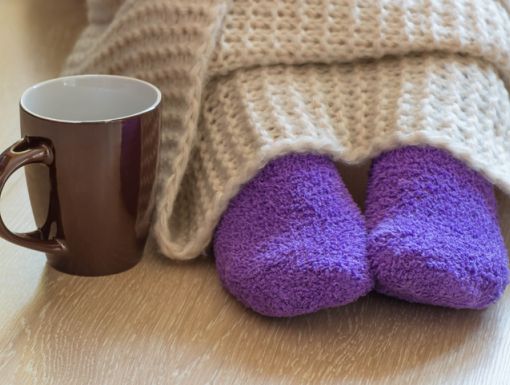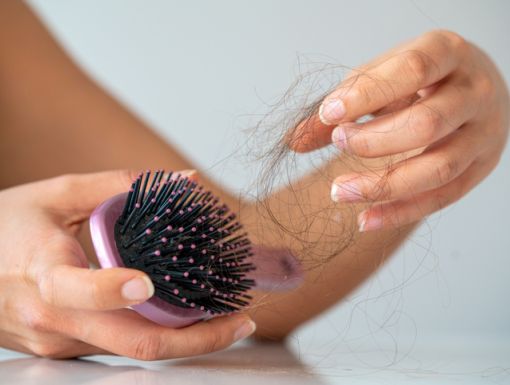
Why Are My Hands Always Cold?
Are you the person who is always told that your hands feel like icicles when someone tries to hold them, even when it’s not cold outside? There are a variety of reasons your hands may feel frigid, and the cause can range from your environment to a medical condition. While it is typically not cause for a great deal of concern, it is helpful to know why it may be happening.
What causes cold hands?
The biggest cause of cold hands is a drop in your environment’s temperature. Spending time outdoors or in a cold room can temporarily cause your hands to become cold. When the temperature drops, the body starts to constrict the blood flow to extremities like the hands to help reduce the amount of body heat lost. Your feet and hands are the furthest away from your vital organs, so reducing blood flow to those areas helps keep other important areas of your body warm.
However, sometimes your hands will become cold when there is no big environmental change. This can be a symptom of various medical conditions, including:
- Hypothyroidism - When a person’s thyroid is underactive and doesn’t produce enough hormones, they can develop hypothyroidism. One symptom of hypothyroidism is lower metabolism rates, which can affect the body’s heart rate and body temperature, causing your feet to become cold.
- Peripheral artery disease – A circulatory condition that occurs when narrowed arteries decrease the amount of blood flow to your limbs. When your arteries narrow, your limbs may not get enough blood to perform the activities you are used to.
- Raynaud’s syndrome - This disorder occurs when arteries in the tips of your fingers shrink and limit the blood supply to the area. Cold weather and stress can trigger this shrinking even further and can cause pain, numbness and color change in the skin. There are two forms of Raynaud’s syndrome – primary and secondary. Primary Raynaud’s disorder occurs more frequently but has no known cause. It is typically less serious. Secondary Raynaud’s disorder is associated with more serious medical conditions such as lupus, rheumatoid arthritis and pulmonary hypertension. Secondary Raynaud’s disorder can also be cause from damage or trauma to the hand, such as frost bite.
- Anemia – People develop anemia when they have a shortage of red blood cells. Those with moderate to severe anemia may experience cold feet. The good news is anemia can be treated with diet modification and medication.
- Diabetes – Frequent high blood sugar levels can cause arteries to narrow, which can decrease blood flow to certain parts of the body including the extremities. Some people with diabetes, can also experience peripheral nerve damage called diabetic peripheral neuropathy. The peripheral nerves send messages from the central nervous system to the brain and can tell the body when, for example, the feet are cold. If this system is damaged, it can lead to tingling, prickling, numbness and muscle weakness in various parts of the body. Damage to these nerves can happen when people have high, uncontrolled blood sugar levels for an extended period of time.
- Poor circulation - One of the most common causes of cold hands. Poor circulation can make it difficult to get enough warm blood to your hands. There are a few different causes of poor circulation that may range from heart conditions that prevent your heart from pumping blood through your body quickly, sedentary lifestyle or smoking.
How can I prevent getting cold hands?
There are a few modifications you can make to your lifestyle to help prevent cold hands, including:
- Wear gloves - The most basic way to prevent getting cold hands is ensuring you are wearing appropriate gear in colder temperatures, such as well-insulated gloves.
- Quit smoking and reduce alcohol consumption – Nicotine and alcohol can cause your blood vessels to tighten, causing poor circulation to your hands.
- Regular exercise - It Is also important to incorporate regular exercise into your routine because it can increase blood flow which helps with circulation.
When should you see a doctor about your cold hands?
If your issues persist, you should let your primary care doctor know at your next visit. Additionally, you should make an appointment with your primary care doctor if you start to experience additional symptoms, such as:
- Weight loss
- Fatigue
- Fever
- Joint pain
- Cracks or sores on your fingertips that are not healing
- New rashes or tightening of the skin
- Skin color changes
- Changes in nail appearance.
What treatments are there for cold hands?
Treatment for cold hands varies. If the cause of your cold hands is due to underling medical conditions like diabetes, hypothyroidism or anemia, your doctor will start you on medication to treat those conditions which can also help with your symptoms, such as cold hands. There are no specific treatments available for conditions like Reynaud’s, but through lifestyle changes (bring a pair of gloves with you every time you leave the house!) you can help control the symptoms.



